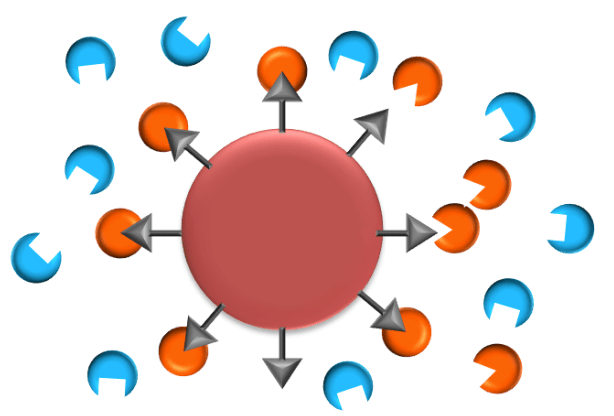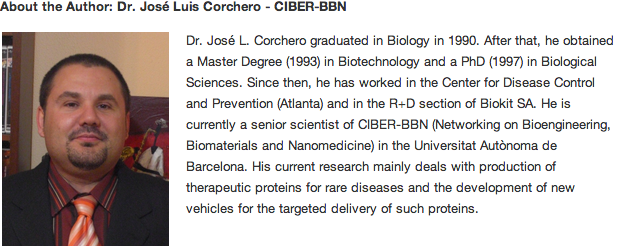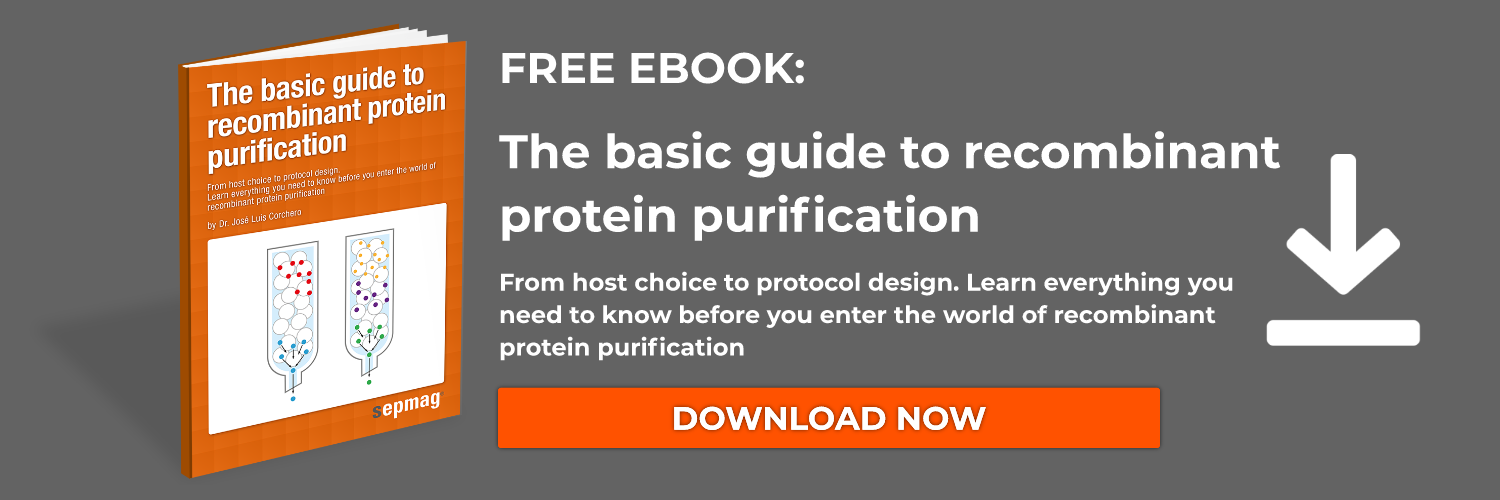Recombinant proteins are produced in the host cells along with a great variety of molecules that it contains naturally. However, for most of their applications (such as for example in therapeutics), a recombinant protein should be purified and isolated from the rest of cell molecules. As we explain in our protein purification handbook, this is obtained by the recombinant protein purification processes.

Examples of recombinant protein purification
Examples in which purification is necessary is in protein structure or sequence studies. In this case, we cannot have the protein of interest mixed with other molecules in order to ensure that the obtained results are reliable. Another example is a protein with a therapeutic application, a case in which we need to ensure that only the therapeutic protein is injected in the recipient organism to avoid unexpected or confusing results.
This post is an excerpt from our protein purification handbook, which explains the basics of recombinant protein purification. Download The Basic Guide to Recombinant Protein Purification here:
Why is chromatography so popular for purification?
Most of the methods for the purification of recombinant proteins are based on chromatography, which is in fact a set of different techniques. Chromatography techniques perform a separation based on differences between the properties of the protein to be purified and the properties of the rest of molecules of the sample. These properties can be specific structures of the molecule, the electric charge or the size, among others.
The most widely used method for protein purification is affinity chromatography, which separates proteins based on their specific interaction with a matrix. It is one of the most effective techniques, since it takes advantage of the incorporation of a structure of choice (called a tag) onto the protein. Such tag is not present in any other molecule of the sample, conferring to our target protein the specific characteristics that will be used to distinguish and separate from the rest. However, in certain situations, we cannot add a tag to our molecule, and we need to turn to less specific methods (although, they can be equally effective, if they are used correctly).
Other widely used purification methods
One of these methods is gel filtration, which separates molecules according to their size. By using a resin with pores of a specific diameter, molecules can be separated by the difficulty they encounter when passing through it. Another commonly used method is ion exchange chromatography, which separates molecules based on the electric charge they have in certain conditions of pH and temperature. Two other common methods are those that separate proteins based on their polarity; the most used ones being the hydrophobic interaction chromatography and the reverse phase chromatography. The main difference among these methods is the polarity of the matrix with which the protein to be purified interacts.
These last techniques are less specific than affinity chromatography, since it is very common to find molecules with similar size and/or charge; therefore, they won’t separate very well. Due to this, these techniques are usually performed in combinations of two or more in order to achieve good results. They are also a good complement to affinity chromatography in order to achieve results that are more refined, in a step known as polishing.
The advantages of magnetic bead separation
Apart from chromatographic purification techniques, magnetic bead separation has shown great results in recent times. Focused more on purification of small quantities, it allows reduction in time and cost of the process. It also assumes simplification of the necessary equipment and facilitates scale-up; therefore, it is an interesting alternative to chromatography.
As we can see, a purification process is always needed in the obtention of proteins, although the grade of purity desired may vary depending on the its intended use. In other words, it is obvious that purification of proteins with a higher purity degree, such as the ones used for therapeutic purposes, will require a greater effort. On the other hand, recombinant proteins for more permissive uses (such as lipases that are included in some detergents) will allow us to work with more flexibility and looser restrictions.
Did you find this post interesting? You can check this related post in order to learn more about protein purification:
- An insight into our protein purification handbook
- The 4 key hosts for the production of recombinant proteins
- How to design the best vector to produce recombinant proteins





